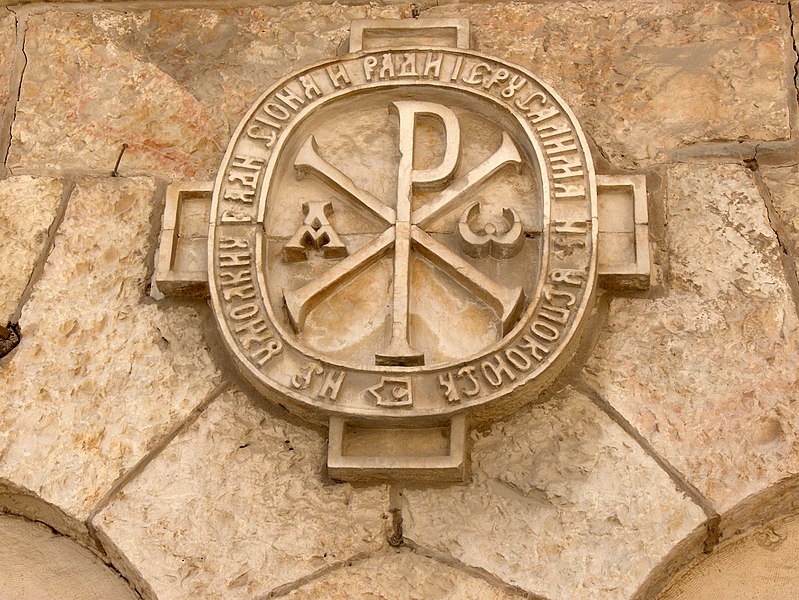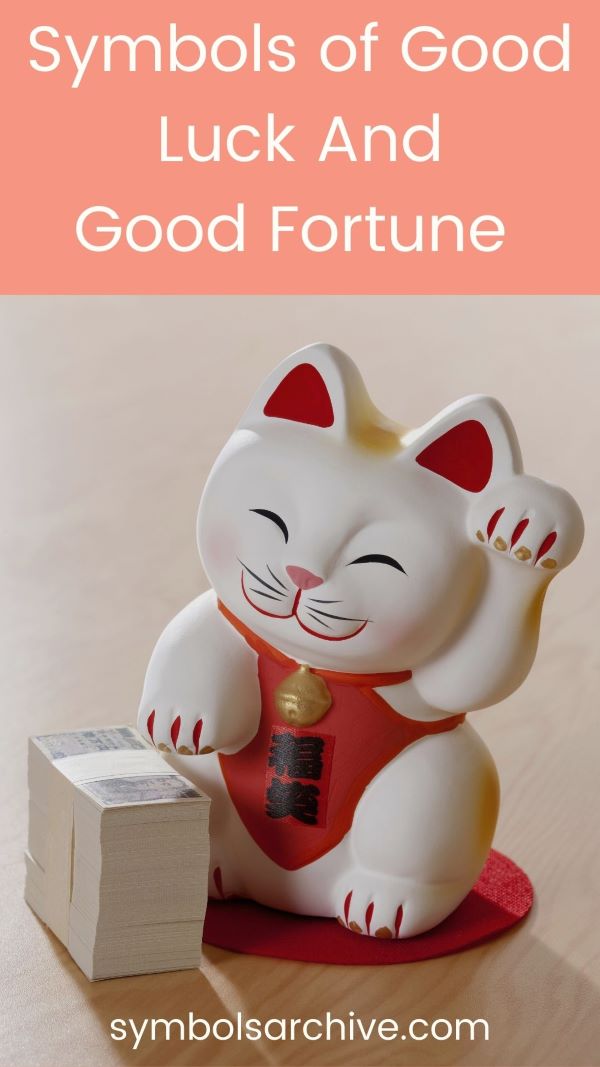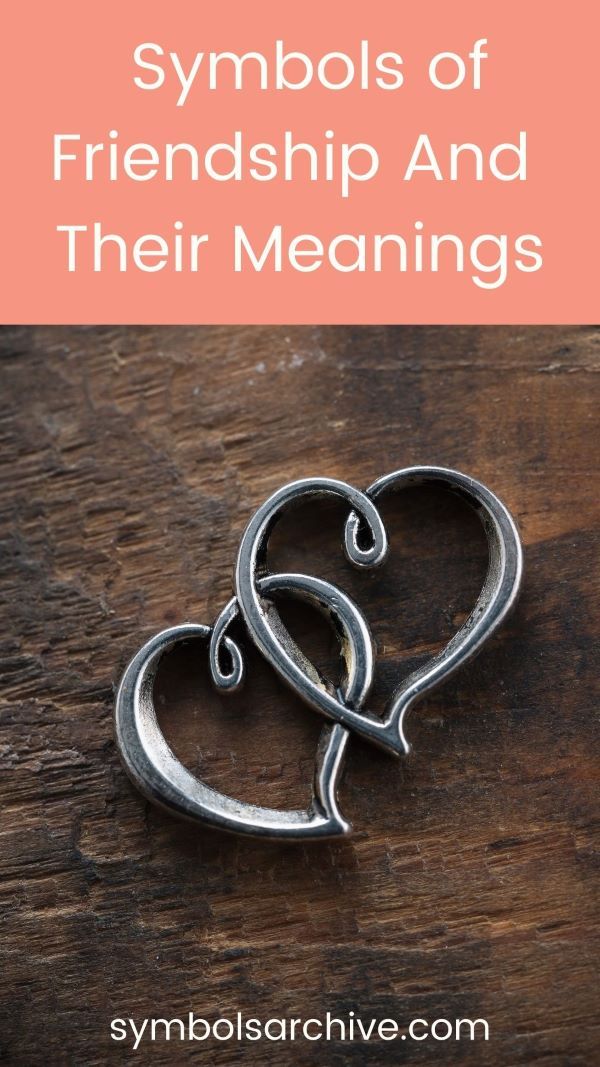8 Symbols Of Good Luck And Their Meanings
Are you looking for symbols of good luck and good fortune?
Having a bad day? Or a bad year, maybe?
You probably need some boost of luck. There are tons of lucky charms around the world. Let’s sift them and choose the most interesting ones.
Symbols Of Good Luck And Their Meanings

Without further ado, here’s a list of symbols of good luck and good fortune across the globe.
1. Sarimanok
The Sarimanok is a symbol of good fortune in the Philippines. It is a mythical bird that has become a prominent symbol of Maranao art in southern Philippines. This bird is believed to bring good luck to anyone who gets to catch it.
This magical bird is depicted as a fowl with colorful wings and feathered tail that is just as colorful. It holds a fish in its beak or talons.
The word “Sarimanok” means “bird of assorted colors” – from “sari,” meaning “various” or “assorted,” and “manok” which is Filipino for “bird” or “chicken.”
Traditionally, the sarimanok should not be displayed by itself. A Sarimanok figure is usually placed on the top of an umbrella owned by a Sultan or other dignitaries.
2. Maneki-neko
The colorfully decorated Japanese cat figurine called maneki-neko is a very popular souvenir among tourists. It is traditionally depicted sitting and holding an oval-shaped gold coin called koban, with one paw raised in a beckoning – not waving – gesture.
Maneki-neko is a good luck symbol in the Japanese and feng shui cultures. It is also known as the money cat or fortune cat, so businesses often put it on display, specially in stores and restaurants.
Maneki-neko’s exact origins are not certain. Some say this symbol of luck and good fortune first appeared in Edo (now Tokyo), others claim it was in Kyoto. However, most agree that it took place during the late Edo period.
There are legends as to how the maneki-neko came to be. One says a lord samurai was saved by a cat from a lightning by beckoning him inside the temple. In his gratitude, the man became the temple’s patron, making it prosperous. A statue of the cat was made in its honor when it died.
According to another legend, a geisha’s pet cat kept tugging at her kimono one day, which made the brothel owner think it was possessed so he cut off its head with a sword.
The cat’s severed head landed on a snake about to strike the geisha, killing the snake and thus saving the woman. The cat’s death made the geisha so distraught that one of her clients made a statue of the cat to cheer her up.
Yet another legend says an impoverished shop owner took in a starving stray cat despite barely having enough food for himself.
In gratitude, the cat sat in the front of the shop beckoning customers, thus, bringing prosperity as a reward to the charitable shop owner. The “beckoning cat” has become a symbol of good luck for small business owners since.
“Maneki-neko” literally means “beckoning cat” in Japanese.
3. Rabbit’s Foot

Have you ever noticed “rabbit rabbit” trending on Twitter during the first day of each month? People believe that if you say “rabbit rabbit” or “rabbit rabbit rabbit” upon waking on the first day of the month, you’ll be lucky for the rest of it.
This trend comes from the belief that carrying a rabbit’s foot as an amulet brings good luck.
The rabbit’s foot is considered lucky in a number of places around the world – from Europe to Asia, to Africa and the Americas – because of their association with the dead body of a criminal.
It is dried out and preserved, and often dyed various colors. These are carried around – by gamblers mostly – in their belief that it will bring them luck.
4. Ladybug
The ladybug represents good fortune in most cultures around the world.
Ladybugs are believed to bring good luck to those who encounter them. If a ladybug lands on you, your wishes will come true and you will be cured of whatever illness you might have. Ladybugs are viewed as an omen of good things to come. However, killing one is said to bring bad luck.
There is a legend surrounding this superstition. It tells of farmers in Medieval Europe who, in their desperation to defend their crops from pests, prayed to the Virgin Mary for help.
This prayer was answered with the cute red beetles with seven black spots that seemed to miraculously save their crops. Farmers named them “Our Lady’s Beetle” in honor of the Virgin Mary, who is commonly depicted wearing a red cloak.
These beetles have become a symbol of good luck and abundance, as well as protection, since.
5. Wishbone
The wishbone is a part of a bird’s skeleton that people break for luck. It is also called the furcula, which is Latin for “little fork” because it is a forked bone formed by the fusion of the two clavicles. It strengthens the bird and helps when it’s flying.
Two persons make a wish before breaking the bone and it is believed that whoever has the larger piece will get their wish granted. A wishbone jewelry is also thought to bring good luck to the wearer.
This custom dates as far back to 322 BC, when a goose’s wishbone was used in fortune telling and weather forecast.
However, wishbone-breaking for luck came about in the early 1600s. The bone was called a merrythought then. The first use of the word “wishbone” to refer to this custom occurred about a quarter of a century later.
Back in the day, wishbones were collected and deemed very lucky. The wishbone has since come to symbolize good luck, as well as optimism and love.
Today, the wishbone symbol is commonly seen in jewely designs.
6. Tumi
Tumi is a ceremonial axe used by some Inca and pre-Inca people of South America during rites of sacrifice. It is a symbol of luck in modern-day Peru, where it is hung on walls for good luck.
Tumi, which means “knife” in Quechua, is also spelled “tome” or “tume.” It is the national symbol of Peru. Its depictions come in the form of mugs, keychains, and other souvenir items.
7. Cartouche

The cartouche symbol is represented as an oval placed vertically, with a horizontal bar at one end. Cartouches could also be horizontal, depending on the length of a royal name written inside it.
This oval-shaped symbol bears hieroglyphs in the center and a line underneath. The circle around the hieroglyph stands to for a magical rope and the bar beneath signifies the place where the rope is tied together. The rope circle symbolizes everything being bound by the sun which represented the king’s power over the universe.
Cartouches were solar symbols, denoting the powers of the sun, with its oval form said to symbolize the shape of the sun.Cartouche was also seen as possessing the ability to protect the kings or pharaohs from the world’s evils.
The oval shape encompassing the hieroglyphic inscription became a symbol of protection for the pharaohs. However, they later came to symbolize both good luck and protection, not just for the royals but the masses as well.
In ancient Egypt, the cartouche symbol was called “shen” or “shenu,” which means “encircle.” The term “cartouche” is pretty recent, having been around only since Napoleon Bonaparte’s time.
To learn more about this Cartouche symbol, click here.
8. Chi Rho

The Chi Rho symbol looks like it has been formed using the letters X and P from the English alphabet, but they are actually Greek. The letters chi and rho look pretty similar to the English X and P. They are the two initial letters of the Greek name for “Christ.”
In Christian art, the Chi Rho is often depicted flanked by the Greek letters alpha and omega, symbolizing Jesus Christ as the Alpha and Omega—the Beginning and the End. The Chi Rho symbol is not mentioned in the Holy Bible, however, even though these letters are used to form the name “Christ” in Greek.
For centuries, Christians have used the Chi Rho symbol to represent Christ and Christianity. However, this Christogram has also been used as a good-luck charm, as well as a talisman for warding off evil.











10 Comments